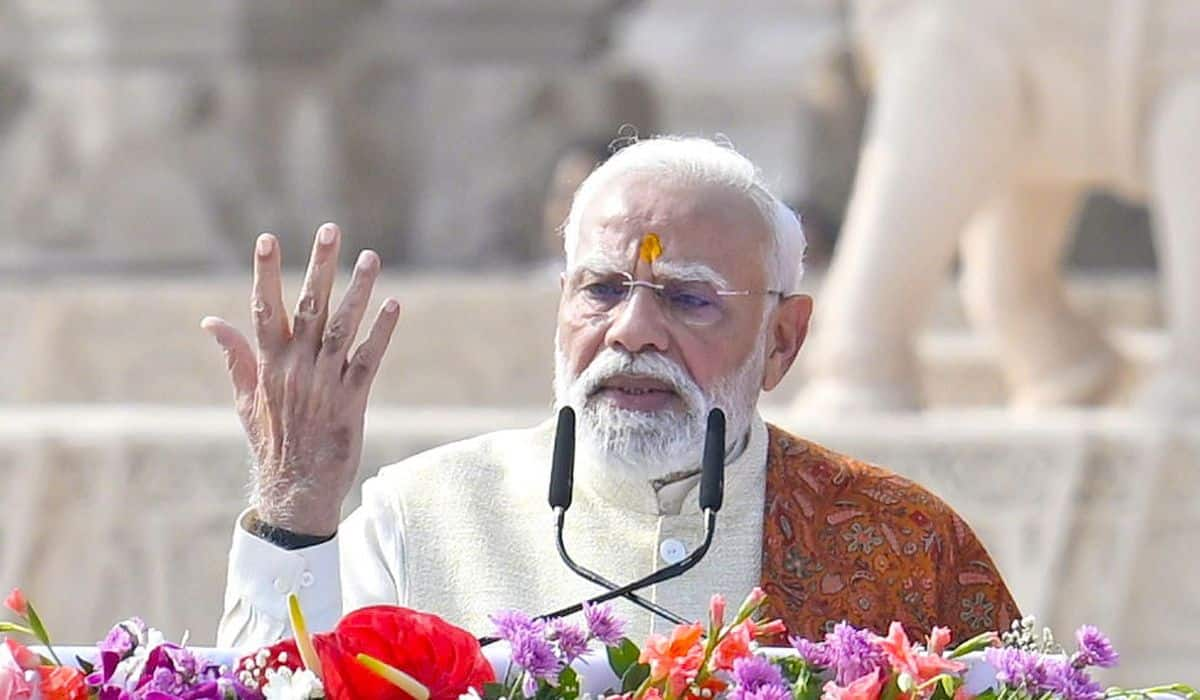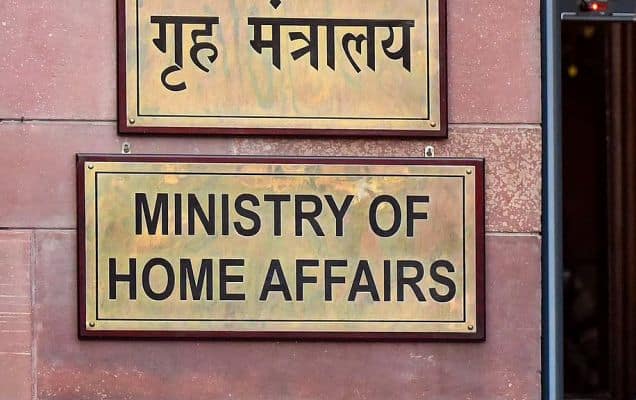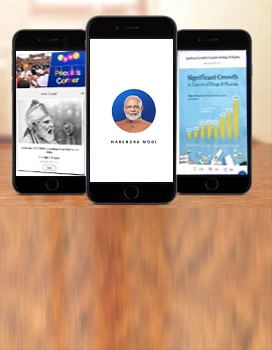Bharat Mata ki – Jai!
Bharat Mata ki – Jai!
Bharat Mata ki – Jai!
Today is a big day for India of the 21st century for urban connectivity and for a self-reliant India. A short while back, I experienced the high speed travel of Gandhinagar-Mumbai Vande Bharat Express. Though the journey lasted only a few minutes, it was, however, a very proud moment for me. This is the country's third and Gujarat's first Vande Bharat train. I travelled to Kalupur Metro Station from Kalupur Railway Station and then reached Thaltej by taking Ahmedabad Metro. If somebody is travelling to Gujarat in Vande Bharat, he can board the metro train at the station itself and reach home or go to another part of the city for work. The speed of the train is so fast that I reached Thaltej 20 minutes before the scheduled programme. While I was travelling in the train, the department officials kept telling me about salient features of the train regarding the speed and various systems. But there was another aspect which the department officials did not notice. I liked that and want to share it with you. I am not a mathematician or a scientist, but I could make out that there was very little sound inside the train compared to an airplane. Compared to the Vande Bharat train, the sound is probably more than a hundred times in an airplane. It is very difficult to talk inside an airplane. I noticed that I was very comfortable talking to people because there was hardly any sound in the Vande Bharat train. It means those who are used to airplanes will prefer Vande Bharat trains instead of airplanes if they come to know about the sound aspect. The residents of Ahmedabad will acknowledge me and Ahmedabad for this initiative. For the first time, I have seen the ocean of such a huge crowd in the midst of such oppressive heat during the Navratri festival when Dandiya is at its peak till late in the night and Gujarat has not slept. Though I grew up here, this is for the first time I am experiencing such a huge program organized by Ahmedabad. Therefore, my hundred salutes to the people of Ahmedabad. And that means that the people of Ahmedabad have an understanding of what a Metro is. I once spoke to urban development ministers. I told them they should introduce Metro services all over the country and it is our responsibility, but the people of Ahmedabad would give you the maximum returns. They asked me the reason. I told them that the people of Ahmedabad make account of everything from the auto rickshaw fare to the time spent in the journey and that too in the midst of summer. They will then count the benefits of the Metro train and will shift immediately to Metro trains. The passengers of Ahmedabad will make the maximum benefit out of it. There was a time when the auto rickshaw drivers in Ahmedabad used to sing ‘I am an auto rickshaw driver of Ahmedabad’. Now that song will be sung by those travelling in Metro trains. The more I congratulate and salute Ahmedabad today less, friends. Today, Ahmedabad has won my heart.

Brothers and sisters,
India of the 21st century is going to get new momentum from the cities of the country. We need to constantly modernize our cities with the changing times and changing needs. It is very necessary to ensure a modern system of transport in the cities, seamless connectivity and one mode of transport should support the other. Those who closely monitor Modi in Gujarat are very good and sharp. Though I don’t know exactly the year, I had organized a global summit regarding multi-modal transportation in Ahmedabad when I was the Chief Minister of Gujarat. Even at that time, I used to think about various modes of connectivity. Since it was the domain of the Indian government, I could not do much then. Now that you have sent me to New Delhi, I accomplished it. I see that vision being realized today. Keeping this in mind, such a huge investment has been made on the infrastructure of cities in the last eight years. Metro has either started its operations or the construction work is going at a fast pace in more than two dozen cities of the country in the last eight years. Dozens of small cities of the country have been connected by air connectivity. The UDAN scheme is playing a big role in providing air facilities in small towns. You are very well aware of the condition of the railway stations in the past. Today, Gandhinagar Railway Station is no less than any airport in the world and two days ago the Government of India gave approval to modernize Ahmedabad railway station as well.

Friends,
The reason behind so much focus and huge investments on the development of the cities of the country is because these cities are going to ensure the creation of a developed India in the next 25 years. Cities like Ahmedabad, Surat, Baroda, Bhopal, Indore, Jaipur, etc are the ones which are going to create the destiny of 25 years of India. These investments are not limited to just connectivity. Rather, smart facilities are being developed in dozens of cities and basic facilities are being improved. Areas around the main cities and suburbs are being developed. Gandhinagar and Ahmedabad are the best examples of how the twin cities develop. The basis for the development of many twin cities in Gujarat is being prepared in the near future. Till now, we used to hear only New York-New Jersey twin city. India cannot be left behind and you can see this in front of your eyes. On the lines of the development of Ahmedabad- Gandhinagar twin city model, we are going to have many such twin cities like Anand-Nadiad, Bharuch- Ankleshwar, Valsad-Vapi, Surat - Navsari, Vadodara-Halol Kalol, Morbi-Wankaner and Mehsana- Kadi which are going to further strengthen the identity of Gujarat. Along with the focus on improving and expanding old cities, new cities are also being built according to the global business demand. GIFT City is also a great example of such plug and play facilities.
Friends,
I remember presenting a video presentation of my vision regarding the GIFT City around 2005-06. There were many who doubted my vision whether this was possible in our country. I read and heard many such comments. Friends, today, GIFT City is in front of you and is becoming a center providing employment to thousands of people in no time.
Friends,
There was a time when transport in Ahmedabad meant red buses and rickshaws.
Friends,
When Gujarat gave me an opportunity to serve, I was fortunate that we were able to work on the BRT corridor. This was also the first in the country. I also had the privilege of undertaking the first journey in a BRT bus. I remember people coming from abroad and insisting their family members travel in BRT buses during their visit to Gujarat next time as they had read and heard a lot about it.
Friends,
Even then the endeavour was to improve the facilities for the common people and to ensure seamless connectivity for them. And it is the job of democracy and governance that the journey of development has to be run on these two tracks according to the needs of the common citizen and with the determination to take the country to new heights. Today we are witnessing that dream come true. I extend my heartfelt congratulations to all of you on this occasion.
Friends,
Today the run on about 32 km section of Ahmedabad Metro has been launched today. And you will be surprised to know that the 32-km vast stretch of a metro train, which has been inaugurated today, is a record since the introduction of the Metro in India. It has another feature. Despite the challenges of building a metro track over the railway line, this work has been completed quickly. This also did not require additional land for the Metro. Today the first phase of the Metro has been inaugurated, while Gandhinagar will be connected in Phase 2.

Brothers and sisters,
The Vande Bharat train started between Ahmedabad and Mumbai will make the journey between the two big cities of the country comfortable and will also reduce the distance. The normal express train takes around seven to eight hours to reach Mumbai from Ahmedabad. Sometimes, it takes longer than that. Shatabdi trains also sometimes take six to seven hours. But the Vande Bharat train will now reach Mumbai from Ahmedabad in five-and-a-half hours. There will be further improvement in it. Presently, Vande Bharat trains are being built in Chennai. Today, I met all the engineers, wiremen, electricians and asked them about the train. They told me to give more orders to them and they would make better and faster versions of Vande Bharat trains in less time. This belief of the engineers and technicians of my country inspires me to say with confidence that the country is going to grow at a much faster rate. Not only this, more passengers will prefer to travel in these trains than other trains. Once I was visiting a station in Kashi and asked about the experience of Vande Bharat trains. The railway officials told me that people prefer Vande Bharat trains the most. I was surprised and asked for the reason. They told me that the poor people and workers prefer this train. They said these people have two logics. One, there is enough space for luggage and second, they reach their destination early and work on the same day and recover the amount of the train ticket the same day. This is the strength of Vande Bharat trains.
Friends,
On this occasion, I also want to tell you how the Ahmedabad project benefited from the double engine government. When it came to use the Botad rail line for the overhead space metro project, the Central Government immediately approved it. This made it possible to start the work of Metro on the Vasna-Old High Court route immediately. When we started working on the Ahmedabad Metro, the route was planned in such a way that even the poorest of the poor would benefit. It was taken care that Metro passes through the areas where public transport is needed the most and where it takes a lot of time to navigate the narrow roads. Maximum care was taken to make Ahmedabad a hub of multimodal connectivity. A multimodal hub is being developed in Kalupur. Here city buses will be parked on the ground floor in front of the BRT station and there will be facilities for taxis and private cars on the upper floor. There is a new metro station towards Saraspur entry and high speed rail stations are also being connected with drop and pick up and parking facilities. A 13-lane road will be constructed in front of the station to connect Kalupur Road Over Bridge with Saraspur Road Over Bridge. Apart from Kalupur, Sabarmati Bullet Train Station is also being developed as a multimodal transport hub.
Friends,
The Government of India has launched the FAME scheme for manufacturing and operation of electric buses so that our poor and middle class families get rid of buses emitting smoke. This way the environment will also be protected and people will also get freedom from noise and smoke. Moreover, the speed of these buses is faster. So far, more than 7,000 electric buses have been approved in the country under this scheme. The Central Government is spending about Rs 3,500 crore on these buses. So far, 8,500 electric buses have been approved for Gujarat and many such buses have also hit the road here today.
Brothers and sisters,
For a long time, no serious efforts were made to free the cities from jams and to increase the speed of our trains. But today's India considers speed important and a guarantee for fast development. This insistence on speed is reflected today in the GatiShakti National Master Plan, in the National Logistics Policy, and is also evident in the drive to increase the speed of our railways. Today the country's rail network is rapidly getting ready to run Made-in-India Vande Bharat trains. I firmly believe that these trains with speeds up to 180 kmph will change the condition of Indian Railways and will also change the direction. We are working fast on the target of running 75 Vande Bharat Express trains by August next year. The beauty of India's Vande Bharat train is that it reaches the speed of 100 kmph in just 52 seconds. When the cheetahs were brought to India, most of the media was discussing the seconds taken by them to reach their maximum speed. This train accelerates in 52 seconds.

Friends,
Today, a large part of the country's rail network has been freed from unmanned gates. When the Eastern and Western Dedicated Freight Corridors are ready, the speed of goods trains will also increase and delays in passenger trains will also be reduced. And friends, when the speed of goods trains will increase, then the ports of Gujarat will start working many times faster than now. India will start reaching all over the world. Our goods will start being exported and the goods that come from abroad will also take us forward very fast, because Gujarat is geographically very close to North India. It is close to the land locked area. Therefore, the coast of Gujarat is likely to benefit the most. Entire Saurashtra and Kutch are going to benefit a lot.
Friends,
Along with speed, there has also been a big shift about infrastructure development today. In the last eight years, we have linked infrastructure with people's aspirations. There was a time when announcements regarding infrastructure were made keeping in mind only the electoral gains and losses. The income of the taxpayers was used only for political interests. The double engine government has changed this thinking. The basis of sustainable progress is the infrastructure built with strong and visionary thinking and today India is working with this thinking and is leaving its mark in the world.
Friends,
We have to give more impetus to the construction of modern infrastructure for building a developed India in the ‘Amrit Kaal’ of independence. The double engine government in Gujarat is also making serious efforts in this regard. I believe that with ‘Sabka Prayas’ (everyone's efforts), we will be able to implement this in the prescribed time. I assure you this.

Friends,
Today is an important day. But today I want to make one more request to the people of Gujarat. I know many people will come here to see the Metro when it will be thrown open to the public in the next two-four days. But I want our school and engineering students to try to understand the technology used to build these railway stations deep inside the earth with the officials of the Railways, urban ministry and Metro. How much did it cost? Whose money is this? This is the money of the countrymen. If we teach the students regarding how it was implemented, how much time it took to implement the project, what kind of technology was used then it would greatly help in the development of the children. Therefore, I request the education department also to brief the travelers of the Metro train about its various aspects, how it was constructed, how it functions, how the tunnel was made deep inside the earth and how such long tunnels were made. They will develop belief in how technology is paving for the development of the country and their ownership will also increase. When the young generation of the country will be made to believe that this belongs to them and for their future they will also realize the importance of not destroying such properties during any agitation. They will feel the same pain when their own property is destroyed. A person is distraught when any damage is done to his cycle. Similarly, he will feel the same way if any damage is done to the Metro. But it is our collective responsibility that we teach our young generation and awaken their consciousness. The picture of Maa Bharati should flash their finds at the mention of Vande Bharat. They should have this feeling that Vande Bharat is running for the bright future of my Mother India and Vande Bharat is going to charge the country. This should be their temperament and sensitivity. There is a provision in the National Education Policy to take the children to all such places for first-hand experience. If there is an earthen pot in the house, he should be taken to the potter to see how he makes pots. He should also be shown this Metro station and briefed about all the systems. It will have a lasting effect on the children and they will also develop the feeling of becoming engineers to do something for the country. Friends, such dreams can be sown in them. Therefore, the Metro is not only meant for travel, but it should also pave the way for success. With this belief, I feel proud and satisfied while presenting this great gift to the people of Ahmedabad, Gujarat and the country and congratulate them. Raise your hands and speak with me with all your might:
Bharat Mata ki – Jai!
Bharat Mata ki – Jai!
Bharat Mata ki – Jai!
Thanks a lot!













